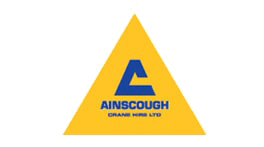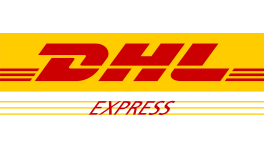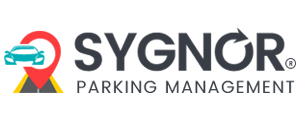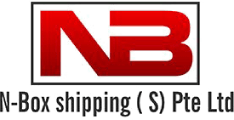Nowadays, businesses are rapidly expanding, and spreadsheets are no longer beneficial in operations. Furthermore, technological developments are changing the way firms operate. Thus, increasing the demand for flexibility, agility, efficiency, and customer satisfaction.
Hence, ERP (Enterprise Resource Planning) system comes as a viable solution. It’s a piece of software that streamlines workflow management and automates business processes.
Well said, it collects and organizes business data, allowing employees to work more seamlessly and efficiently as the company grows.
Even stats put it better:
- 88% of corporations believe that the ERP system helped their business thrive.
- By 2026, the ERP software market is expected to be worth $78.4 billion.
- Around 49% of organizations agreed that their business operations improved after implementing ERP.
The ERP implementation may seem challenging but all these statistics depict that many organizations are even surpassing the business expectations.
However, many businesses have heard of ERP but are unsure of its benefits or how to adapt it into their operations.
So, let us explain ERP software and how to successfully implement it in detail.
Enterprise Resource Planning Defined

The Enterprise Resource Planning System (ERPS) is a platform that helps businesses plan and run their day-to-day operations. Inventory management, supply chain management, manufacturing, and so on are a few examples.
It can be utilized to automate and streamline an individual’s business processes across the corporation. The tasks may involve risk management, project management, accounting, customer relationship management, etc.
Overall, ERPs help in integrating all company aspects, from budget planning to procedure prediction. Hence, achieving better performance and operational management.
How to Achieve ERP Software Implementation Successfully
Determine your End-goals and Objectives
The identification of objectives and defining the precise needs is the first step before implementation.
When it comes to deciding whether or not to install ERP, many firms are unsure about their business goals. As a result, there is no successful ERP adoption, and the bottom line suffers.
With so many benefits of the ERP system, firms must concentrate on determining what their objectives are. And it can assist them in accomplishing those goals.
Focus on specific process requirements, how the ERP can affect the bottom line, and why your company requires it. As a result, the more accurate you are, the better the ERP solution you will choose and integrate.
Pick the Right Team and Assign Roles
When you have decided on the enterprise resource planning software, the next step is to hire in-house experts with relevant experience.
Many firms make the mistake of sparing some time to their existing in-house staff to complete the implementation.
So, rather than making this error, remember that only experienced employees can provide you detailed business insights.
Begin by hiring a team with essential capabilities and defining their responsibilities. Encourage them to concentrate on making the ERP implementation process as simple as possible.
Overall, the specialists you choose must be capable of creating high-level objectives and ensuring that the ERP project is completed on time and under budget.
Selecting the Right ERP System
One of the most crucial tasks in the implementation process is to choose the right ERP software. This is because not all solutions will meet your requirements and provide you with the same benefits. Furthermore, the ERP system used by someone else may or may not meet your specific needs.
Your go-to solution should not be dependent on a one-size-fits-all approach. So, think of your business needs, what your specialization is, and your future goals.
Build Project Layout

It is critical to map out the procedure layout before moving on to implementation. It will provide you with a comprehensive picture of your digital transition.
This strategy must have the following elements:
- Previously established objectives
- Enlist goals and tasks
- Well-structured deadlines
- Individual and team member responsibilities
- Final result testing case studies
Outlining all of these factors can help you identify the areas of the firm that demand additional attention.
Data Migration is Essential
Data migration is again a significant part of the ERP system implementation. This is because simplifying business operations is effective if done right.
Hence, before directing all your company data onto the new ERP system, filter out the unnecessary data. This will keep your system accurate and clutter-free.
The goal behind filtering information is to transfer only the necessary data, resulting in maximum efficiency and integrity.
Perform System Configuration
It’s time to integrate and launch your ERP system now that you’ve chosen it and determined your goals. Configure the software and tweak it according to your needs after you’ve set up the infrastructure.
However, the length of the procedure may vary depending on the implementation partner and software vendor.
Some ERP solutions, for example, are robust yet take a long time to implement. Some of them can be ready to use right out of the box. To make the installation process run more smoothly, choose a good vendor who first knows your demands. Others may overlook critical details during the implementation process, leaving your requirements unmet.
To avoid surprises, you should also negotiate the deadline and procedure with the vendor ahead of time.
Provide Training to Employees

Following the implementation and testing of the ERP solution, the next step is to teach the staff how to effectively use the system. Start by assembling a team of professionals to deliver on-site ERP employee training. Additionally, assist staff in fully understanding and becoming informed about the product.
Of course, your IT staff should receive sufficient training so that they are prepared to address any future technical problems.
Perform Your Go-Live Step
After you’ve learned how to utilize the ERP system, begin with organizing all sources and projects. As a result, the business activities can be successfully streamlined.
You should retest the system to check that it is functioning correctly.
However, don’t fall into the trap of believing that ERP implementation is complete. Continuous operation of a firm is critical for successful implementation. You can’t just teach the staff, implement the solution in place, and forget about it.
Support and Maintenance is Critical
With such software solutions, you can’t just stop on implementation; proper maintenance and support are required.
The level of support provided is one of the most significant differences between successful and unsuccessful ERP installations. For ERP system maintenance, you can hire an in-house team. They should be well-trained and educated about support requirements and how they will affect your business. You can also choose to outsource your support and maintenance requirements.
You must ensure efficient system maintenance to avoid any malfunctions. If something goes wrong, it can be handled swiftly and effectively. As a result, enabling you to achieve maximum profitability and operational efficiency.
The Bottom Line
Investing in an ERP software package might be a worthwhile investment. People frequently choose cost-effective solutions, but you must look for solutions tailored to your company’s demands.
Although it may necessitate a significant amount of effort, time, and outlining, the appropriate transition will undoubtedly pay off in the long run. You may face numerous hurdles during ERP system adoption if you lag the necessary understanding.
At Stellen Infotech, we offer unique ERP systems tailored to your company’s needs. We also have an experienced team of ERP solution installation experts on hand to make the process go as smoothly as possible.
So, contact us today to explore more about how we assist organizations with their ERP journey.






















































